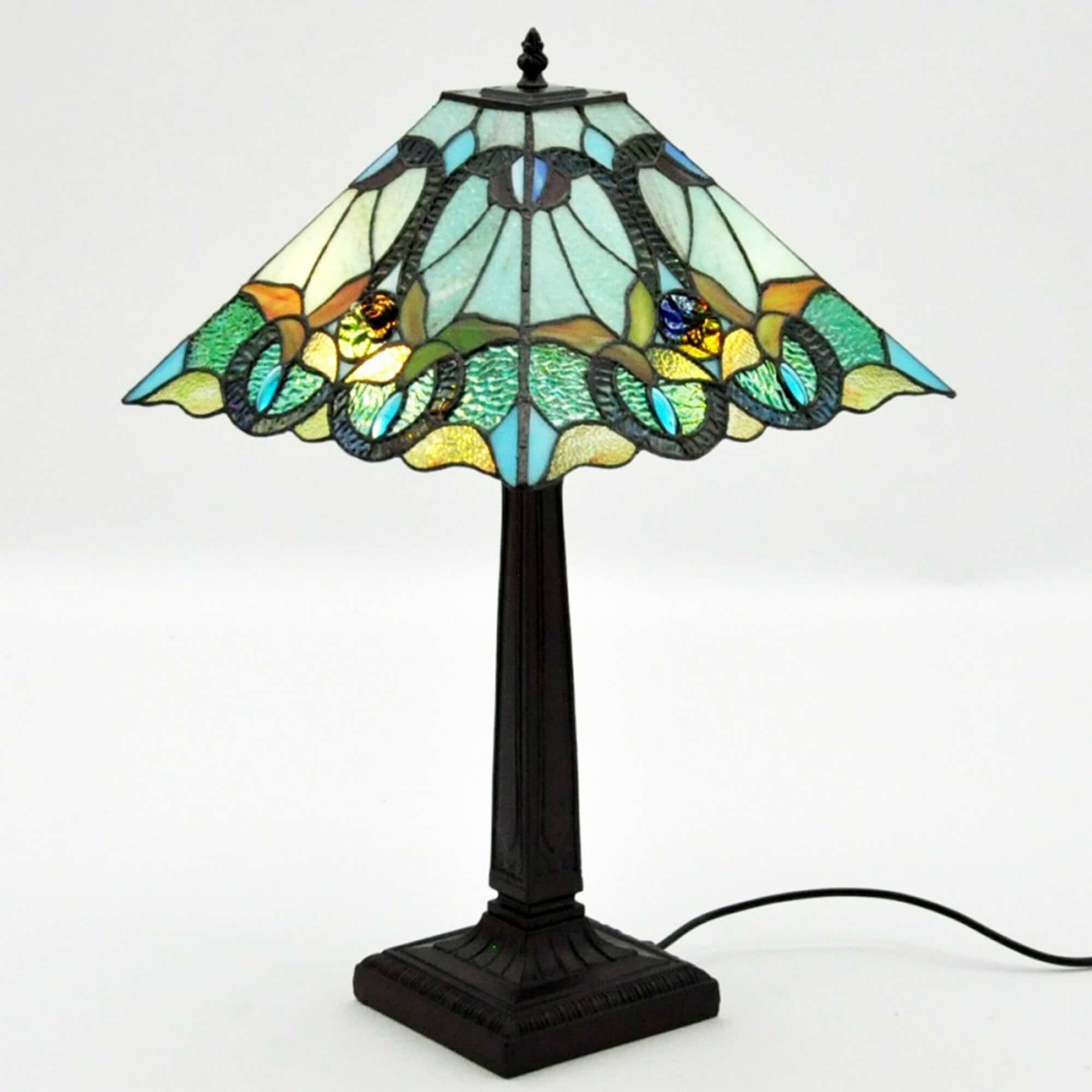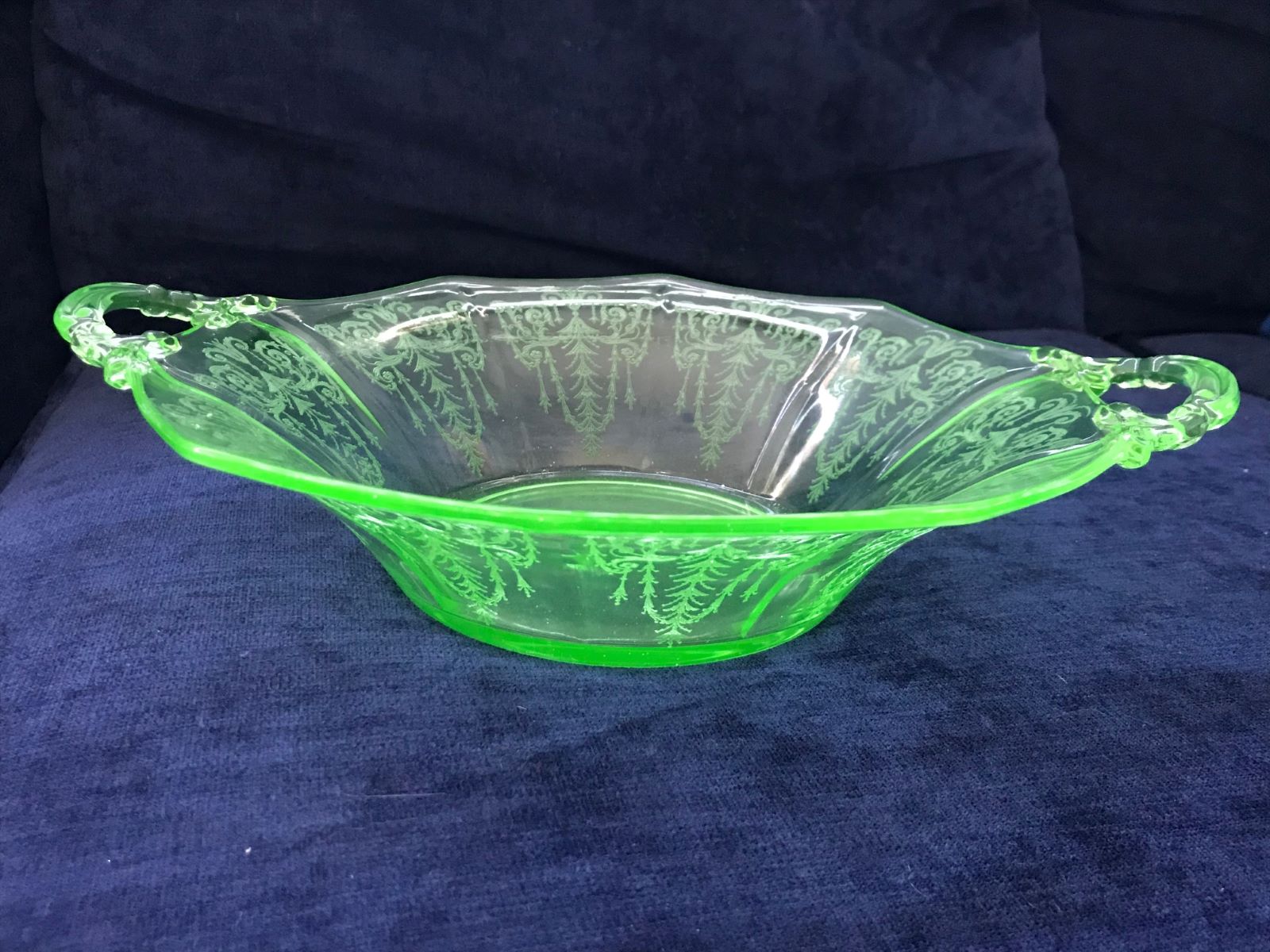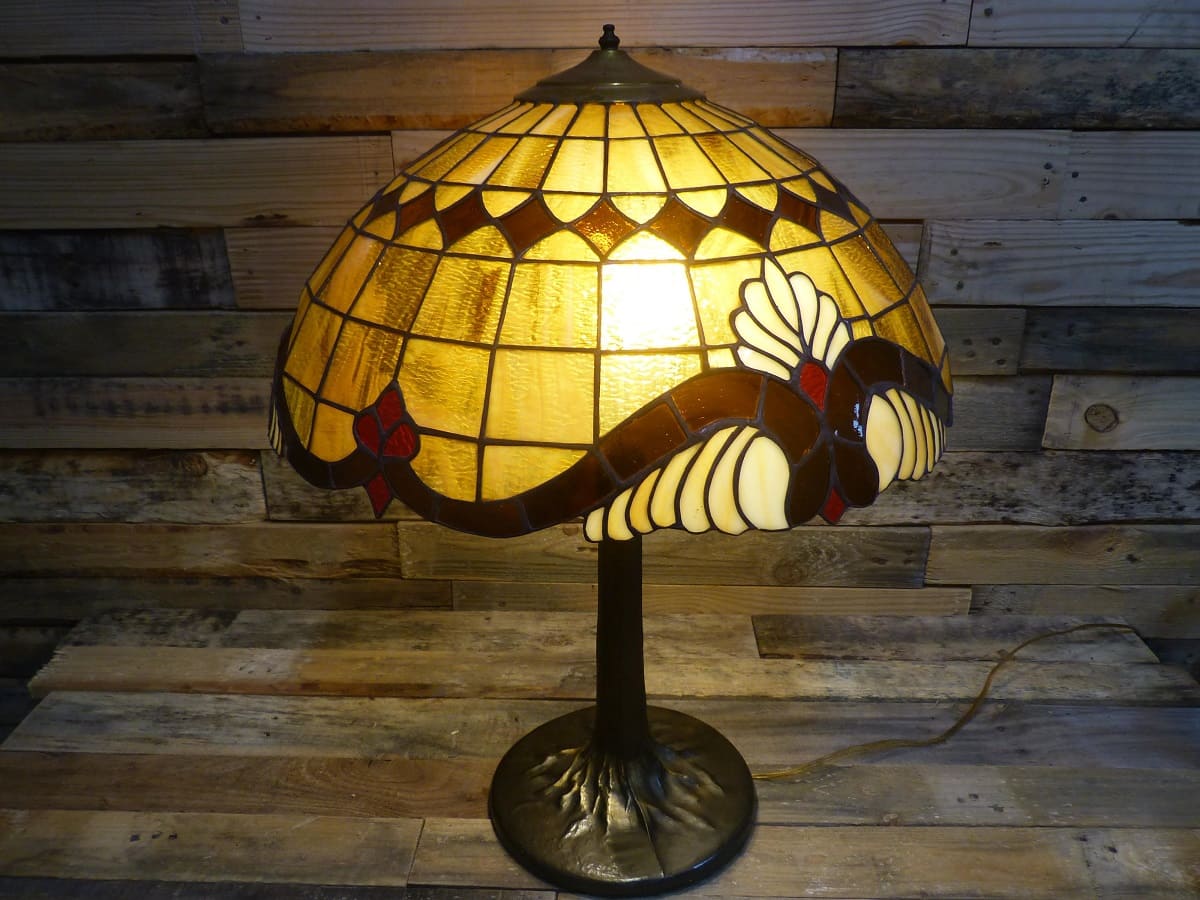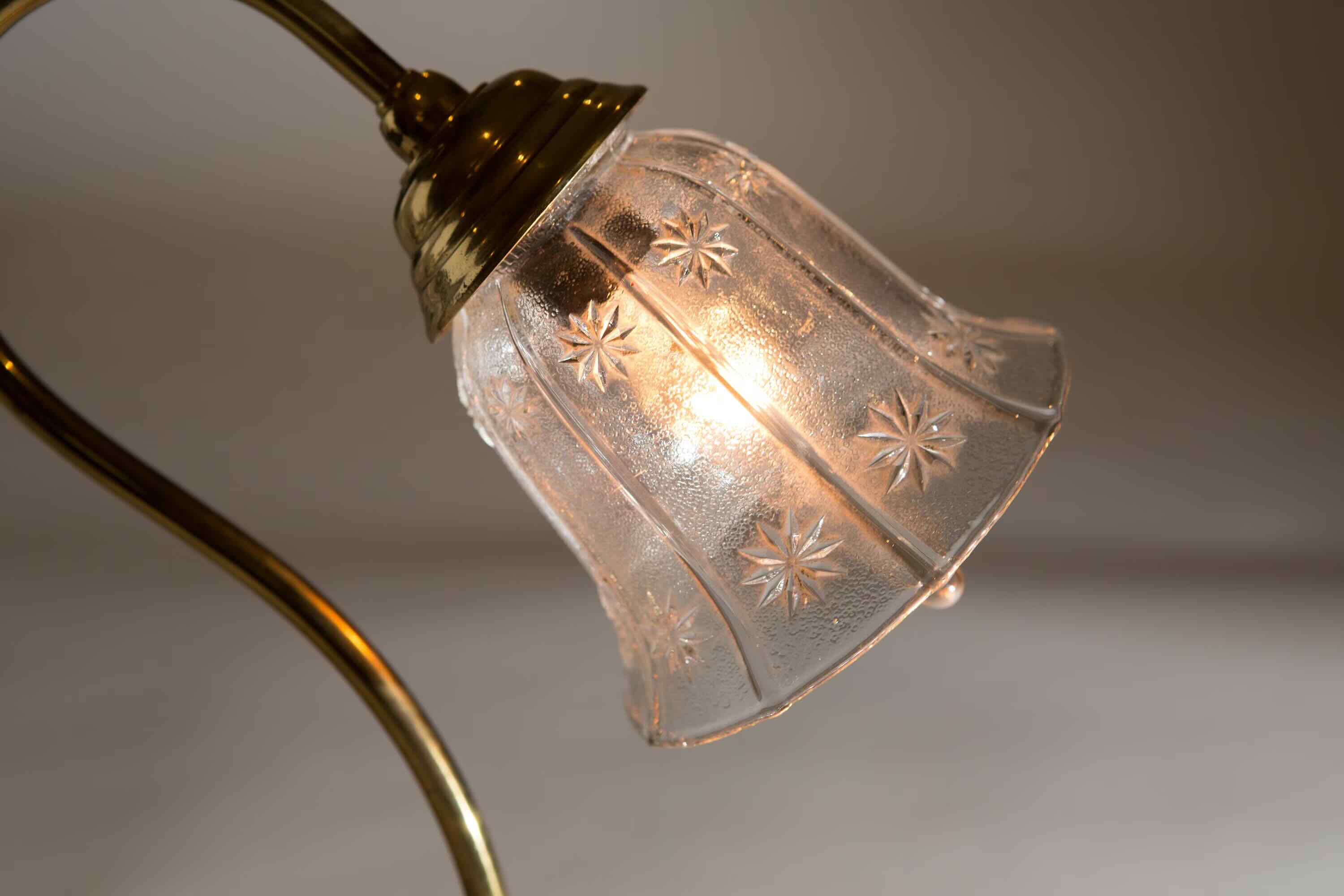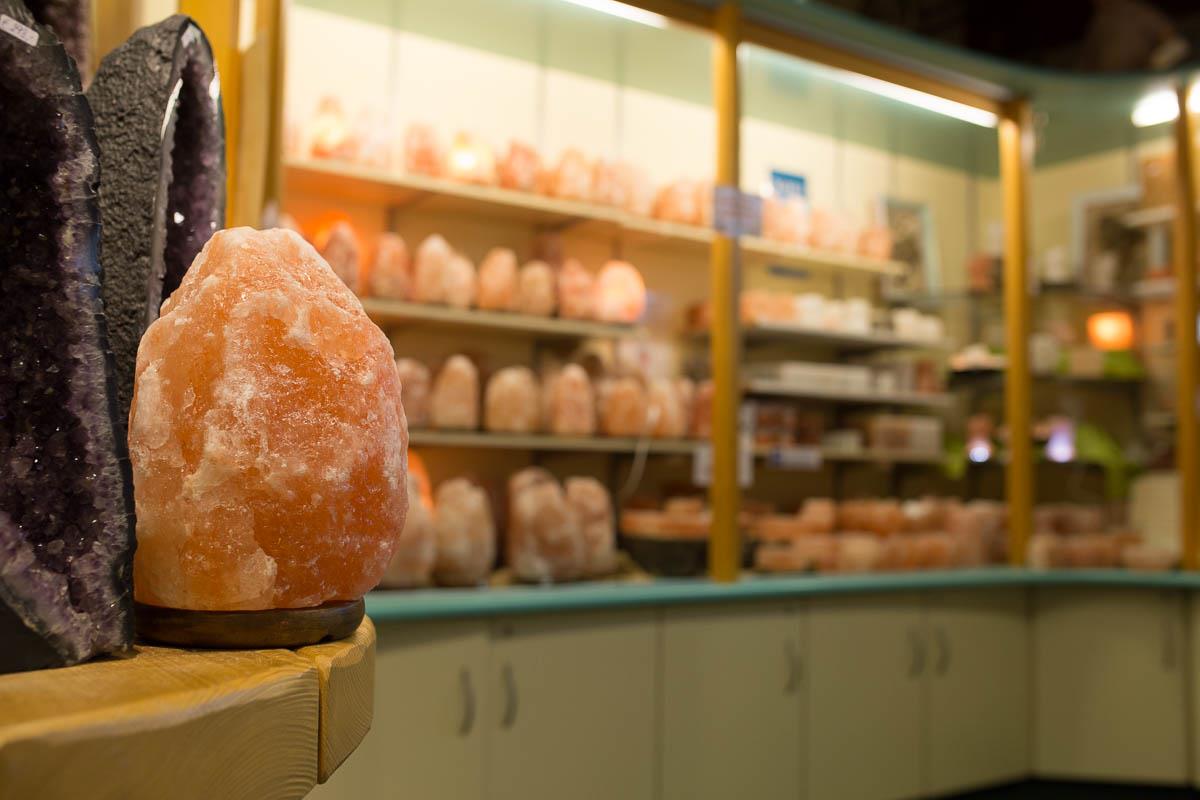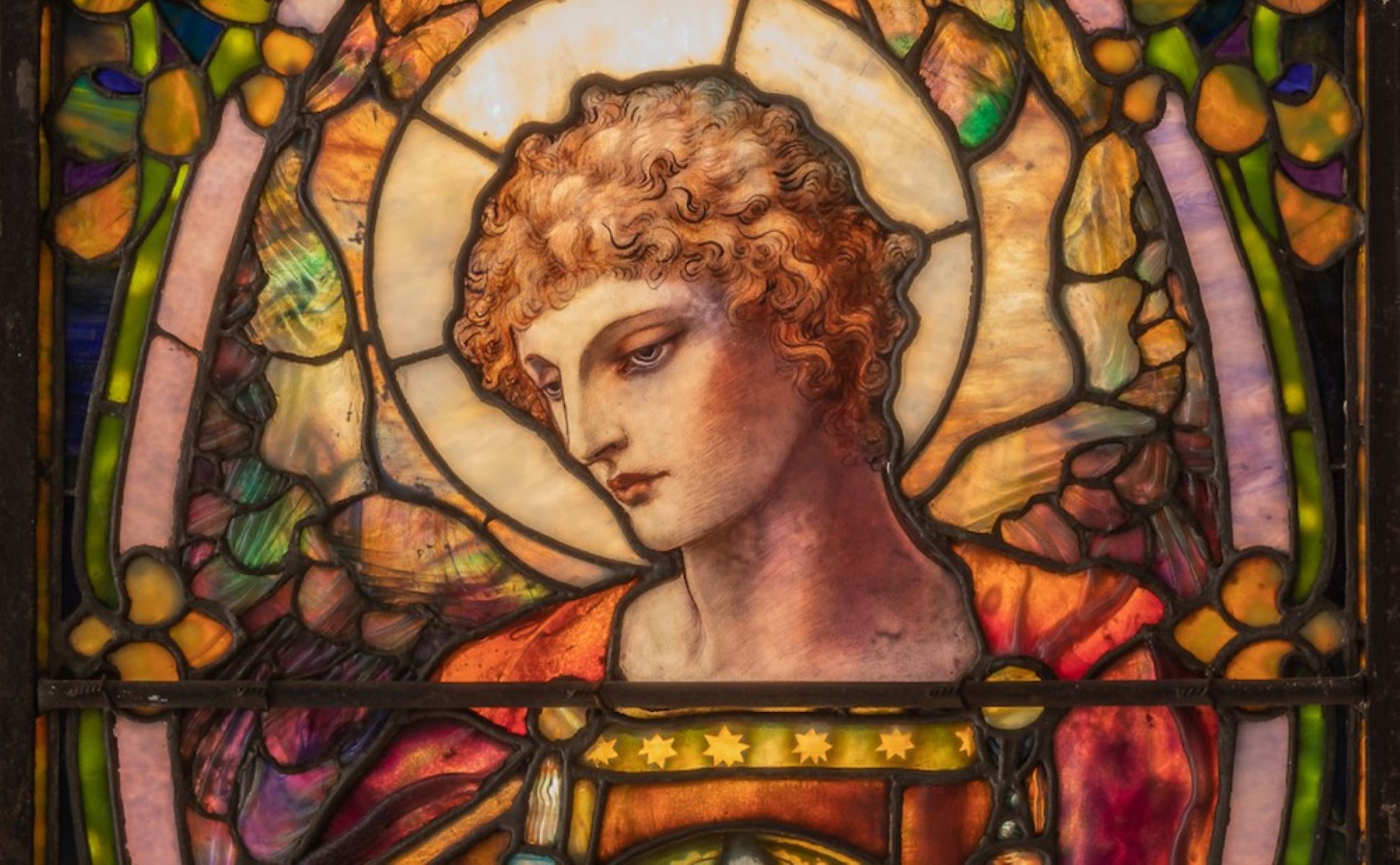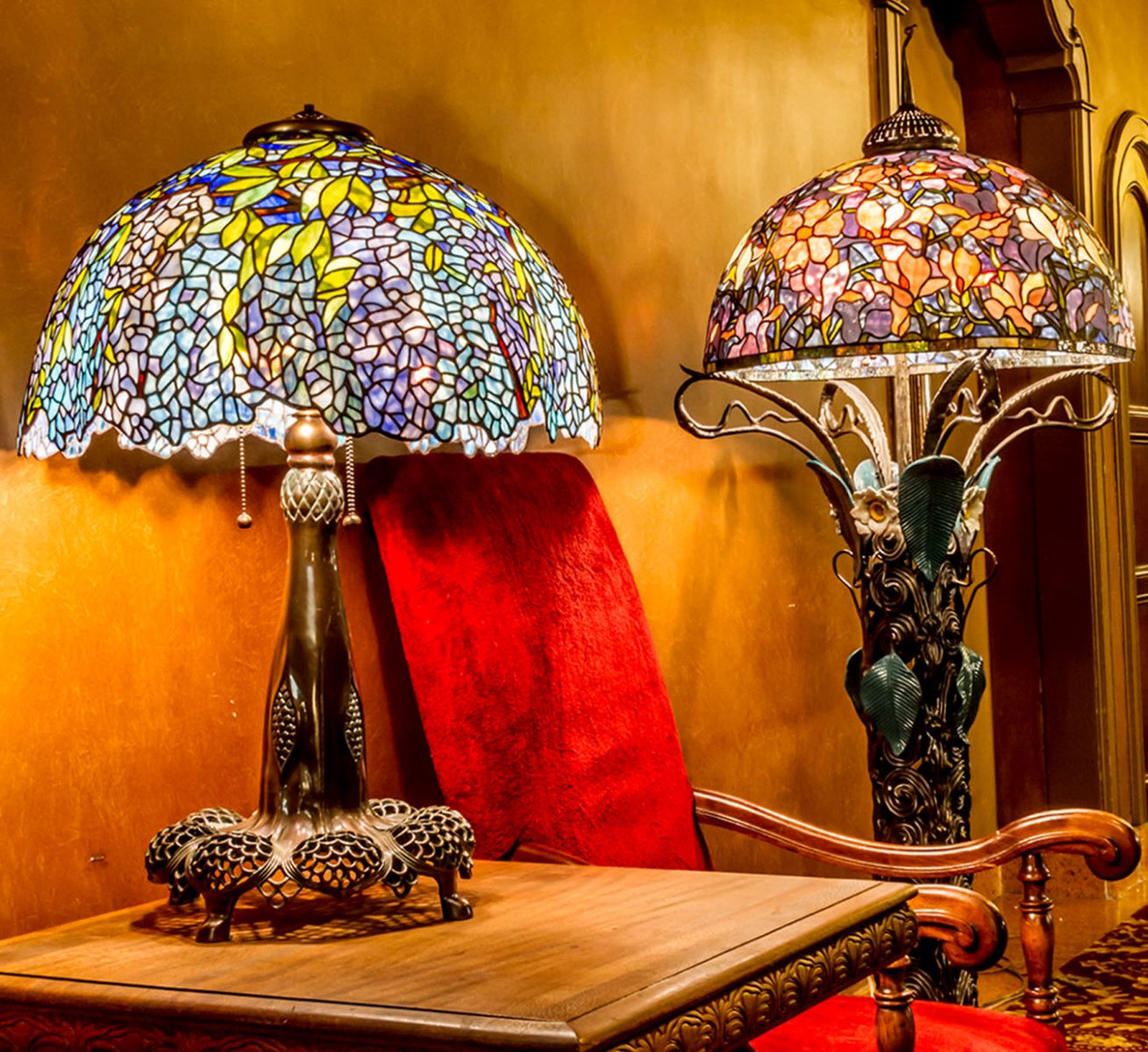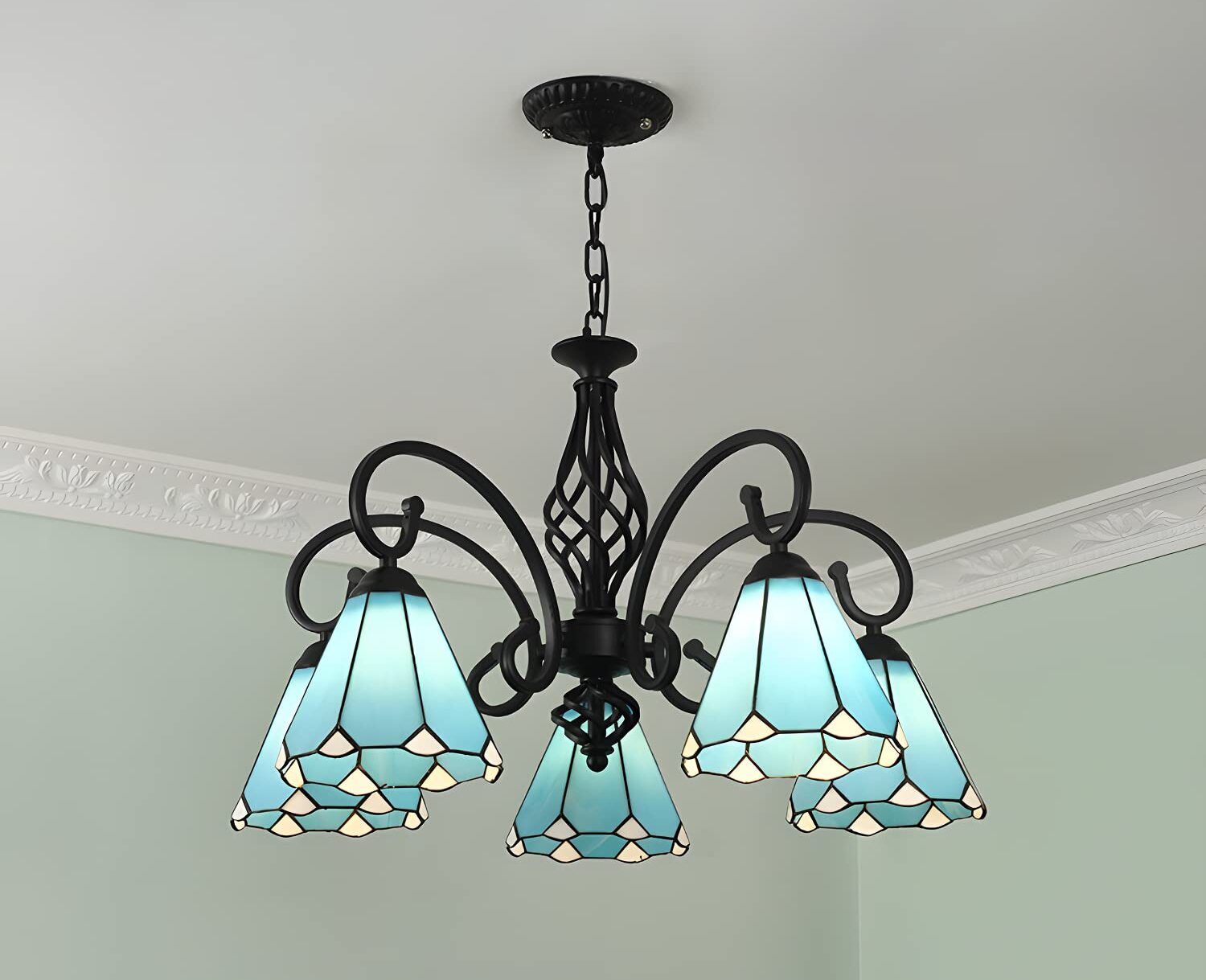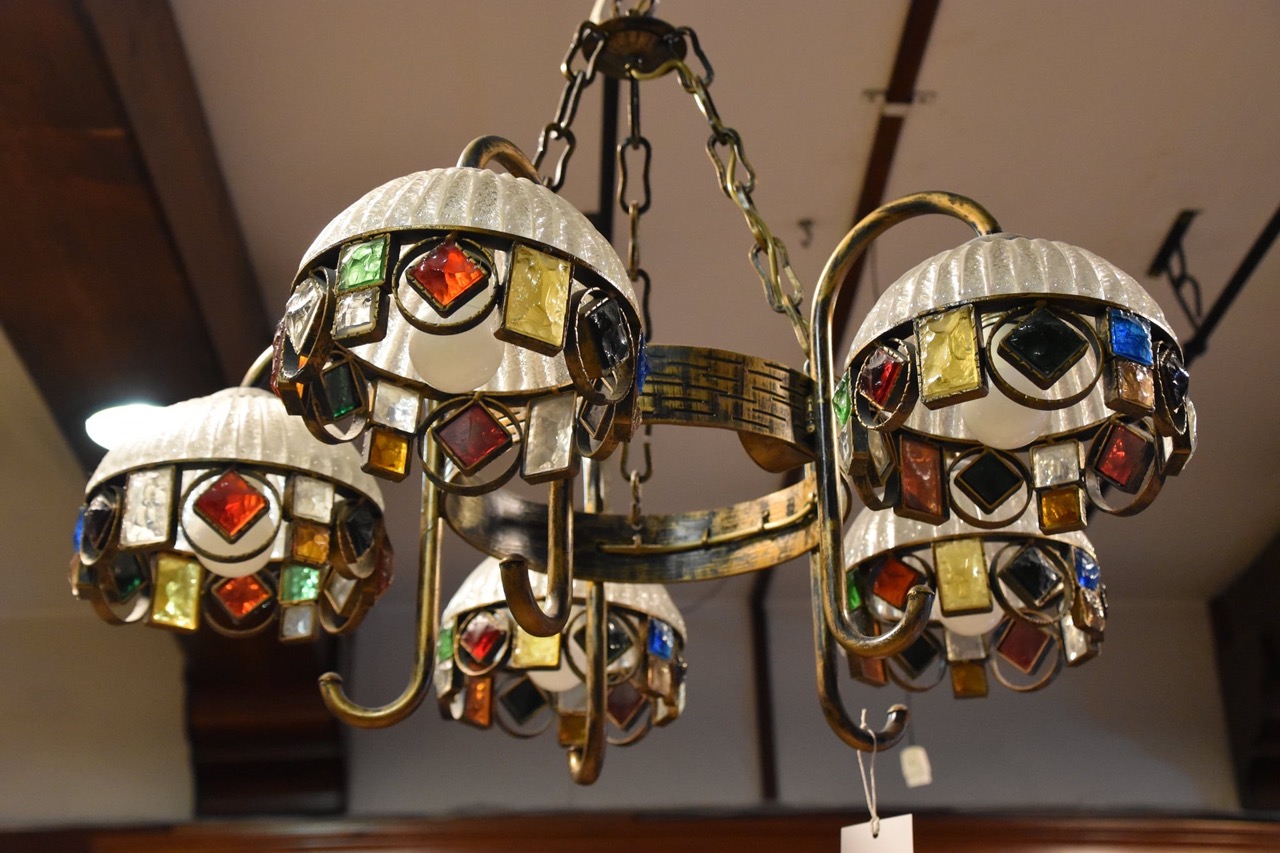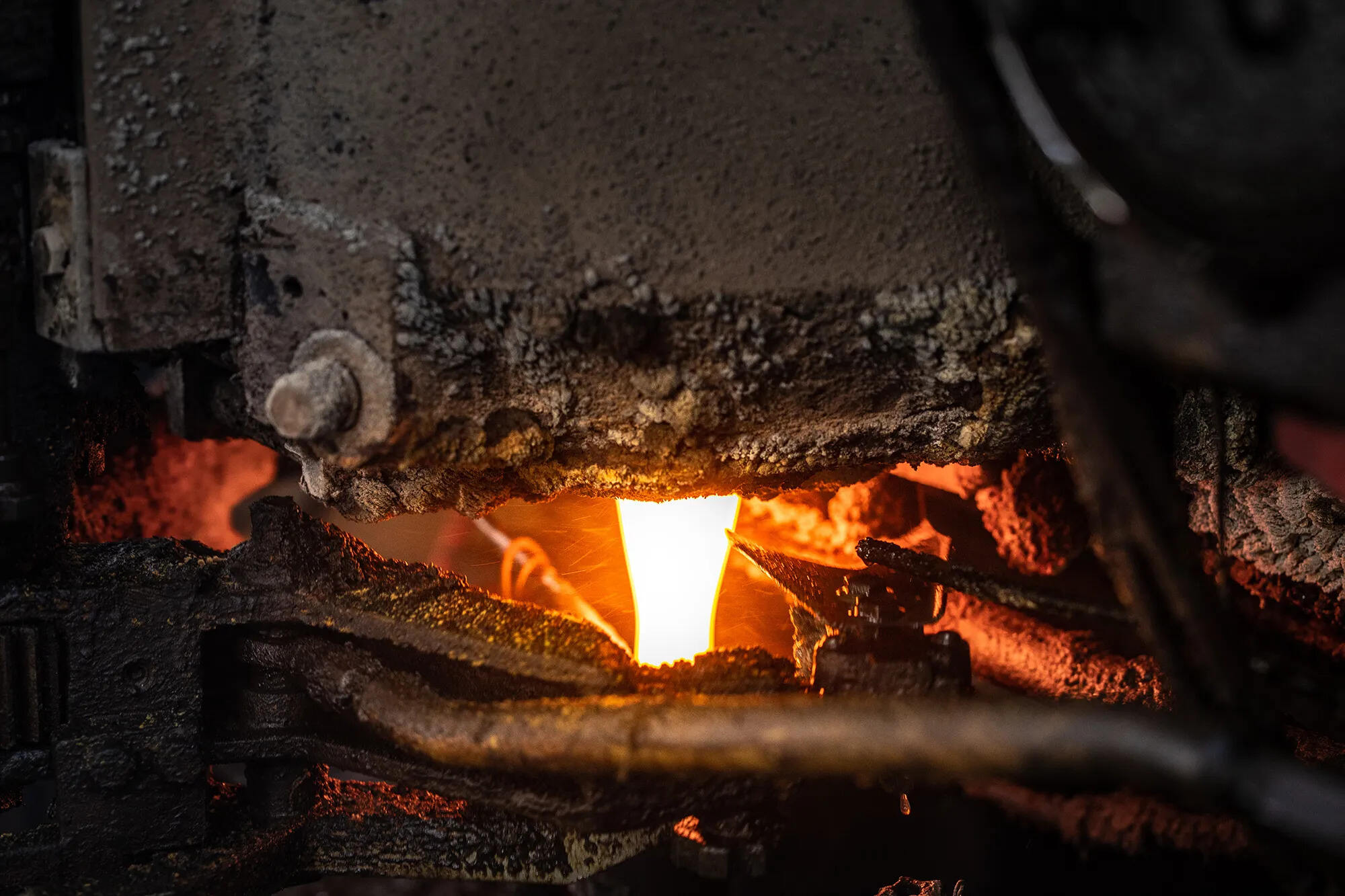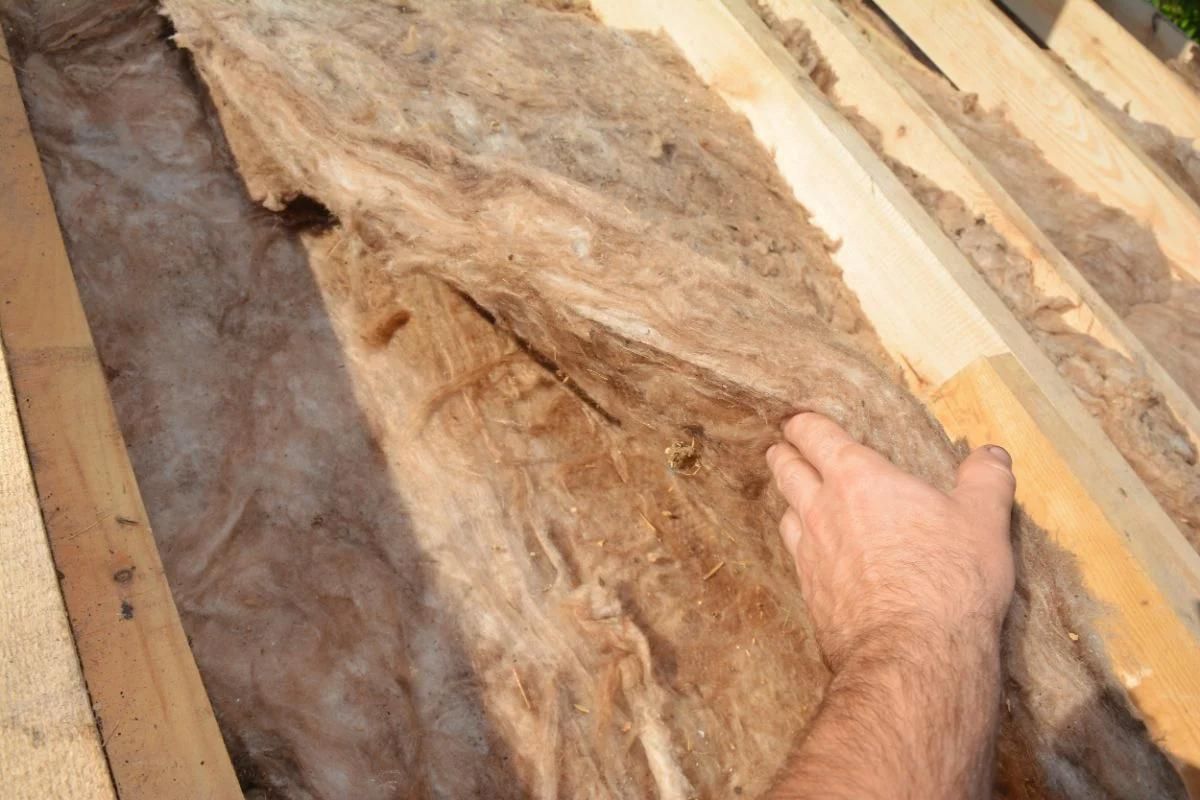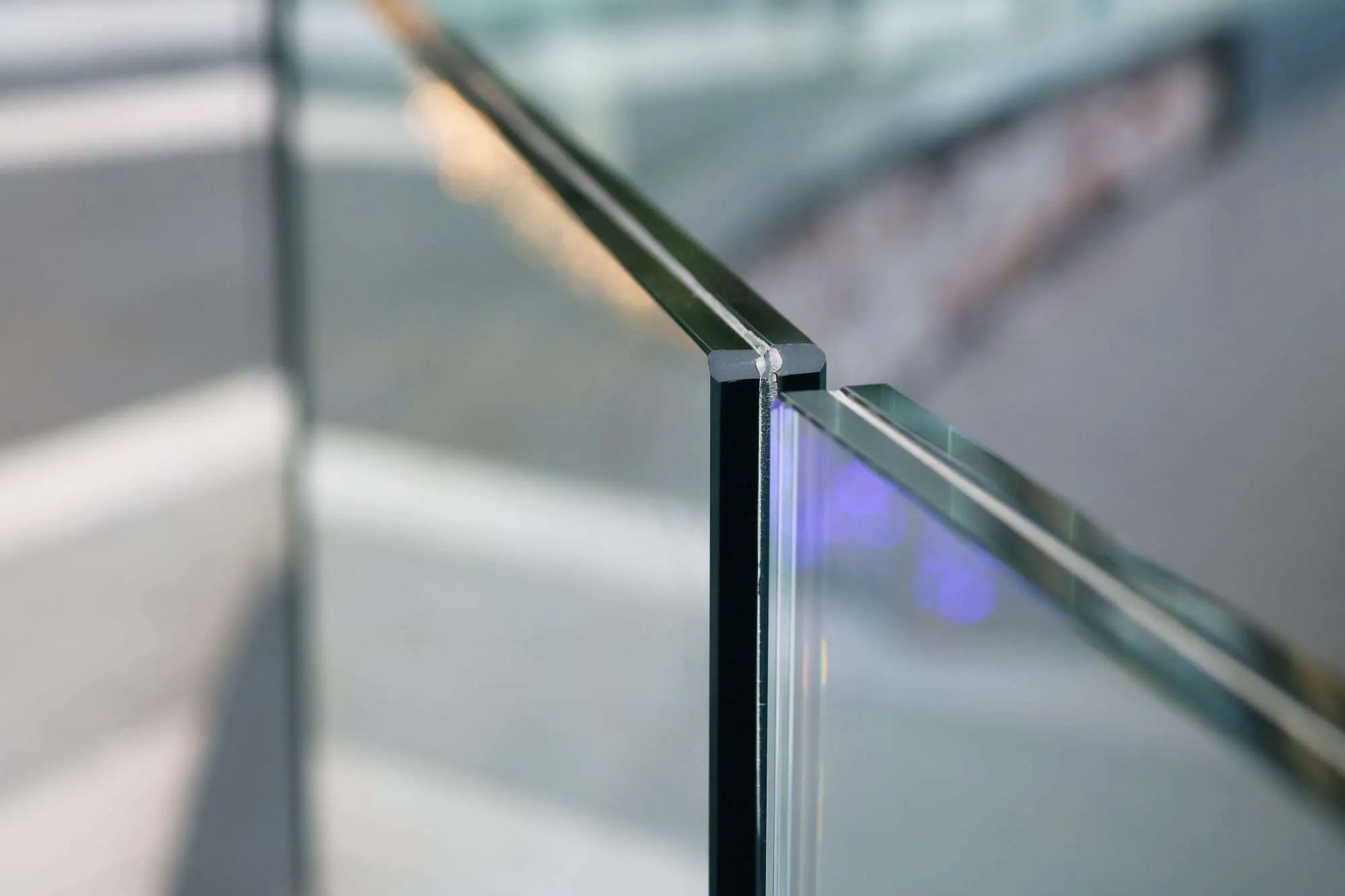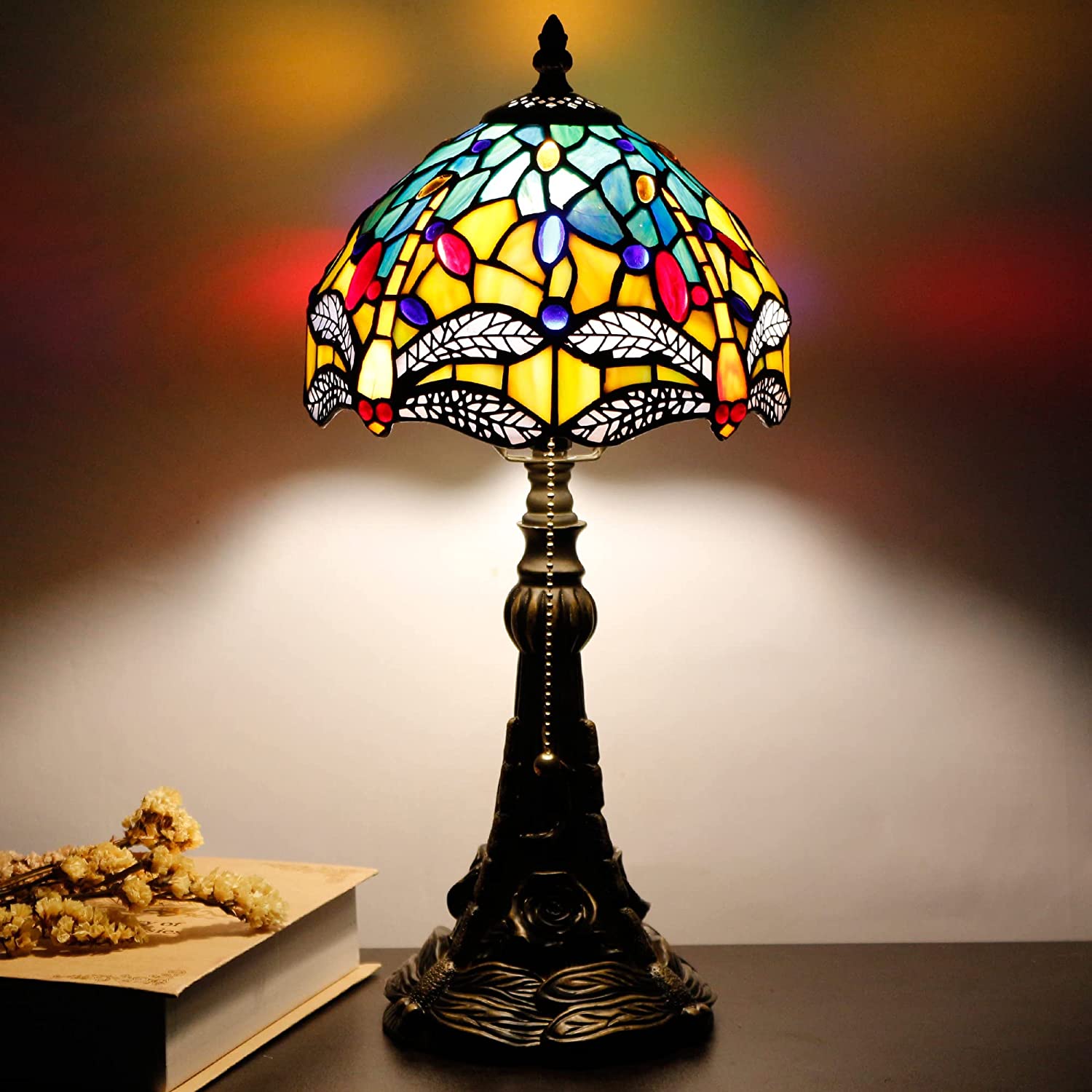

Furniture
How To Tell If It’s A Tiffany Lamp
Modified: March 1, 2024
Learn how to identify authentic Tiffany lamps and distinguish them from imitations. Discover the key features and hallmarks of these exquisite furniture pieces.
(Many of the links in this article redirect to a specific reviewed product. Your purchase of these products through affiliate links helps to generate commission for Storables.com, at no extra cost. Learn more)
Introduction
Welcome to the world of Tiffany lamps, where beauty and craftsmanship intertwine to create timeless pieces of art. These iconic lamps, with their vibrant stained glass shades and intricate bases, have captured the hearts of many furniture enthusiasts and collectors. If you’re curious about whether that lamp in your possession is an authentic Tiffany lamp or a reproduction, you’ve come to the right place. In this article, we will explore the distinguishing characteristics of Tiffany lamps and equip you with the knowledge to tell the real deal from the imitations.
The history of Tiffany lamps dates back to the late 19th and early 20th centuries, when Louis Comfort Tiffany, an innovative and talented artist, unveiled his exquisite designs. Tiffany lamps were highly sought after during the Art Nouveau movement, and their popularity has endured to this day. The lamps were crafted using a technique known as the copper foil method, which involved wrapping individual pieces of colored glass with copper foil and soldering them together to create intricate patterns and designs.
One of the hallmarks of Tiffany lamps is their distinctive shade design. The shades are often adorned with intricate patterns, featuring motifs such as floral, nature-inspired, or geometric designs. The use of vibrant colors and the play of light passing through the stained glass create a mesmerizing and enchanting effect.
To determine if a lamp is an authentic Tiffany, one must carefully examine both the base and the shade. The base of a Tiffany lamp is usually made of bronze, and it often features intricate details and a sturdy construction. The base can provide valuable clues about the authenticity of the lamp, as Tiffany lamps were carefully crafted with attention to detail and quality materials.
The shade of a Tiffany lamp is where the true beauty and artistry shine through. Genuine Tiffany shades are made of individual pieces of cut glass that are meticulously assembled using the copper foil technique. The glass used in Tiffany lamps is of high quality, with rich colors and variations in texture and opacity. The presence of subtle imperfections, such as small air bubbles or irregularities, is a sign of authenticity, as these imperfections were a result of the handcrafted nature of Tiffany lamps.
Identifying authentic Tiffany lamps can sometimes be challenging, as there are numerous reproductions and knock-offs in the market. These lamps attempt to imitate the style and design of Tiffany lamps but lack the craftsmanship and quality of the originals. By familiarizing yourself with the distinguishing features of genuine Tiffany lamps, you can confidently navigate the market and make informed decisions when purchasing or evaluating these valuable pieces.
In the following sections, we will delve deeper into the specific characteristics to look for when examining the base and shade of a Tiffany lamp. We will also discuss some common reproductions and provide resources for further research. Whether you are a collector, enthusiast, or simply someone intrigued by these iconic lamps, this article will serve as a comprehensive guide to help you identify whether it’s a Tiffany lamp or not. Let’s embark on this journey into the world of Tiffany lamps and unravel the secrets behind their enduring allure.
Key Takeaways:
- Tiffany lamps are distinguished by their stained glass shades, intricate bases, and organic motifs. Genuine pieces showcase exceptional craftsmanship, vibrant colors, and a mesmerizing lighting effect.
- Identifying authentic Tiffany lamps requires knowledge of their history, meticulous examination of the base and shade, and consideration of distinctive characteristics. Research, expert evaluation, and a discerning eye are essential.
Read more: What Is A Tiffany Lamp
Background on Tiffany Lamps
Tiffany lamps hold a significant place in the history of decorative arts. These iconic lamps are the brainchild of Louis Comfort Tiffany, a renowned artist and designer who made a remarkable impact on the Art Nouveau movement.
In the late 19th and early 20th centuries, Tiffany embarked on a quest to create innovative and beautiful lamps that would showcase the beauty of stained glass. He established the Tiffany Studios in New York City, where a team of skilled artisans brought his designs to life.
The creation process of Tiffany lamps involved a unique technique known as the copper foil method. This method required each piece of colored glass to be wrapped in thin copper foil and meticulously soldered together. The result was a stunning mosaic of glass pieces, forming intricate patterns and designs.
Tiffany lamps became highly sought after during the Art Nouveau movement, which emphasized the beauty of natural forms and a departure from traditional artistic styles. Tiffany’s lamps perfectly embodied the essence of Art Nouveau, with their organic motifs, vibrant colors, and harmonious designs.
One of the reasons Tiffany lamps gained widespread acclaim was the quality of their craftsmanship. The artisans at Tiffany Studios meticulously selected and cut each piece of glass, ensuring that the colors and textures harmonized and created a visually stunning effect when illuminated.
Tiffany lamps were not just a source of functional lighting; they were true works of art. The intricate designs on the shades, featuring motifs inspired by nature, flowers, and other organic elements, added a touch of elegance and beauty to any space they adorned.
During the early 20th century, Tiffany Studios produced a wide range of lamp designs, ranging from table lamps to floor lamps and hanging lamps. Each design boasted its own unique flair, but all shared the same meticulous attention to detail and craftsmanship.
Today, Tiffany lamps continue to captivate the hearts of collectors and enthusiasts around the world. Genuine Tiffany lamps are highly prized and can fetch significant prices in the antiques market. However, due to their popularity, there has been an increase in reproductions and imitations of Tiffany lamps.
Identifying an authentic Tiffany lamp requires a keen eye and understanding of the distinguishing characteristics that set them apart. By familiarizing yourself with the background and history of Tiffany lamps, along with their unique production techniques and design aesthetics, you can make informed decisions when evaluating and purchasing these timeless pieces of art.
Characteristics of Tiffany Lamps
Tiffany lamps are known for their distinctive features that make them stand out from other types of decorative lighting. These characteristics are essential to consider when determining whether a lamp is a genuine Tiffany or a reproduction. Let’s explore the key characteristics that define Tiffany lamps:
Stained Glass Shades: One of the most recognizable features of Tiffany lamps is their stained glass shades. These shades are crafted using individual pieces of colorful glass that are carefully cut and arranged to form intricate patterns and designs. The use of vibrant colors and the play of light passing through the stained glass create a mesmerizing and enchanting effect.
Copper Foil Method: Tiffany lamps are created using the copper foil method, a technique pioneered by Louis Comfort Tiffany himself. Each piece of glass is wrapped in thin copper foil, and the edges are soldered together to form a secure bond. This method allows for precise detailing and intricate designs that are characteristic of genuine Tiffany lamps.
Handcrafted Artistry: Tiffany lamps are a testament to exceptional craftsmanship. Each lamp is meticulously handmade by skilled artisans who carefully select and cut each piece of glass. The attention to detail is evident in the precision of the soldering, the smoothness of the edges, and the overall quality of the finished product.
Organic and Nature-Inspired Motifs: Tiffany lamps often feature motifs inspired by nature, such as flowers, foliage, and dragonflies. These organic elements are intricately incorporated into the design, creating a harmonious and visually appealing composition. The use of natural motifs was a hallmark of the Art Nouveau movement and is a distinct characteristic of Tiffany lamps.
Variety of Styles and Sizes: Tiffany lamps come in a variety of styles and sizes, catering to different aesthetic preferences and functional needs. From smaller table lamps to larger floor lamps, there is a wide range of options to choose from. Each style showcases the unique design elements and craftsmanship that are synonymous with Tiffany lamps.
Quality Materials: Authentic Tiffany lamps are crafted using high-quality materials. The bases are commonly made of bronze, with intricate details and a sturdy construction. The glass used for the shades is carefully selected for its vibrant colors, texture variations, and overall quality. The presence of subtle imperfections, such as small air bubbles or irregularities in the glass, is a sign of authenticity, reflecting the handcrafted nature of Tiffany lamps.
By familiarizing yourself with these characteristics, you can better evaluate whether a lamp is a genuine Tiffany or an imitation. While there are reproductions and knock-offs in the market, genuine Tiffany lamps embody a level of artistry and craftsmanship that is difficult to replicate. The next sections will delve deeper into how to examine the base and shade to determine the authenticity of a Tiffany lamp.
Examining the Base
When determining the authenticity of a Tiffany lamp, examining the base is crucial. The base not only provides stability and support but also gives valuable insights into the craftsmanship and quality of the lamp. Here are some key factors to consider when examining the base of a Tiffany lamp:
Material: Authentic Tiffany lamp bases are typically made of high-quality materials, with bronze being the most common choice. The bronze base is often adorned with intricate details and decorative elements, showcasing the dedication to craftsmanship that Tiffany lamps are known for. Look for a weighty and solid feel, as genuine Tiffany lamp bases tend to be substantial and well-made.
Construction: Pay attention to the construction of the base. Genuine Tiffany lamps feature solid and sturdy bases, with well-defined edges and smooth finishes. The base should be free from any signs of poor craftsmanship, such as rough soldering, visible seams, or unpolished surfaces.
Design: Tiffany lamp bases come in a variety of designs, from simple geometric shapes to more elaborate and ornate forms. Examine the design of the base and look for the attention to detail that is characteristic of authentic Tiffany lamps. Intricate patterns, textured surfaces, and decorative embellishments are all indications of a genuine piece.
Signature: Some Tiffany lamp bases may bear a signature or stamp from the Tiffany Studios. While the absence of a signature does not automatically mean the lamp is not genuine, the presence of a Tiffany Studios mark adds another layer of authentication and value to the piece. However, it is important to note that some reproductions may also have forged signatures, so it should not be the sole basis for determining authenticity.
Patina: Over time, bronze develops a natural patina, a thin layer that forms on the surface due to oxidization. Genuine Tiffany lamp bases often have a patina that adds depth and character to the piece. Look for a natural, aged patina that has developed consistently over the entire surface of the base. Be cautious of bases with an overly uniform or artificial-looking patina, as it may be a sign of a reproduction.
Examining the base of a Tiffany lamp in conjunction with analyzing the shade is essential to establish the authenticity of the lamp. Genuine Tiffany lamps display a remarkable level of craftsmanship in both their bases and shades, with attention to detail, quality materials, and impeccable construction. By carefully evaluating the base, you can gain valuable insights into the authenticity and value of a Tiffany lamp.
Analyzing the Shade
The shade of a Tiffany lamp is a true testament to the artistry and beauty of these iconic pieces. Analyzing the shade is a crucial step in determining the authenticity of a Tiffany lamp. Here are some key aspects to consider when examining the shade:
Stained Glass: Genuine Tiffany lamp shades are made of individual pieces of stained glass that are carefully cut and assembled using the copper foil method. Each piece is unique, with its own shape, color, and texture. Look closely at the glass and observe the variations in color and shading. Authentic Tiffany shades feature a wide range of vibrant colors, blended together to create stunning visual effects.
Patterns and Designs: Tiffany lamp shades often feature intricate patterns and designs that are characteristic of the Art Nouveau style. Look for motifs inspired by nature, such as flowers, leaves, dragonflies, and other organic elements. The designs should be well-executed, with smooth transitions between the glass pieces and a sense of harmony in the overall composition.
Quality of Craftsmanship: The craftsmanship of a Tiffany lamp shade is evident in the precision of the glass cutting, the soldering, and the overall construction. Genuine Tiffany shades exhibit meticulous attention to detail, with precise fits between the glass pieces and smooth, invisible solder lines. The edges of the glass should be smooth and free from chips or roughness.
Texture and Opalescence: Tiffany lamp shades often incorporate glass with different textures and levels of opalescence. Look for subtle variations in the surface texture of the glass, ranging from smooth to textured. Opalescent glass, which exhibits a milky or pearly appearance when held up to the light, is another characteristic feature of authentic Tiffany shades.
Subtle Imperfections: Genuine Tiffany shades may have subtle imperfections that are a result of the handcrafted process. Look for small air bubbles, tiny variations in glass thickness, or even tiny hairline cracks. While these imperfections may seem insignificant, they add authenticity and character to the shade. Reproductions will often lack these subtle imperfections due to mass production methods.
Lighting Effects: When lit, a Tiffany lamp shade comes alive with a warm and enchanting glow. The play of light through the stained glass creates captivating patterns and enhances the overall beauty of the lamp. Examine how the light filters through the glass, noting the interplay of colors and the overall ambiance created by the shade.
By carefully analyzing the shade of a Tiffany lamp, you can gain valuable insights into its authenticity and quality. Genuine Tiffany shades showcase expert craftsmanship, vibrant colors, intricate designs, and a magical lighting experience. Keep in mind that reproductions and imitations may attempt to mimic these characteristics, but the unparalleled artistry and attention to detail of an authentic Tiffany shade are hard to replicate.
Look for the “Tiffany” signature on the lamp base or shade. Authentic Tiffany lamps will have a signature somewhere on the lamp, often on the base or inside the shade.
Read more: How To Make A Tiffany Lamp
Identifying Authentic Tiffany Lamps
Identifying authentic Tiffany lamps can be a challenging task, as there are numerous reproductions and knock-offs in the market. However, by closely examining the base and shade of a lamp and considering key factors, you can increase your chances of determining its authenticity. Here are some guidelines to help you identify authentic Tiffany lamps:
Research and Knowledge: Before delving into the world of Tiffany lamps, it is essential to educate yourself about the history, styles, and distinctive features of genuine Tiffany lamps. By familiarizing yourself with the work of Louis Comfort Tiffany and the production techniques employed by Tiffany Studios, you can better understand what to look for when examining a lamp.
Workmanship and Quality: Authentic Tiffany lamps display exceptional workmanship and use high-quality materials. Examine the overall construction of the lamp, including the base and the shade. Look for precision in detailing, sturdy construction, and the use of quality materials like bronze and genuine stained glass.
Distinctive Characteristics: Pay attention to the unique characteristics of Tiffany lamps, such as the copper foil method of construction, the vibrant colors and variations in the stained glass, the intricate patterns and designs inspired by nature, and the presence of subtle imperfections that result from the handcrafted process. These distinctive features set genuine Tiffany lamps apart from reproductions.
Signature and Markings: Some original Tiffany lamps may bear a signature or a mark from the Tiffany Studios. However, it is important to note that signatures can be forged, and not all genuine Tiffany lamps may have a visible mark. If you come across a signature, research its authenticity or consult with experts in the field to confirm its legitimacy.
Provenance and Documentation: If possible, try to gather information about the lamp’s provenance and any accompanying documentation that can attest to its authenticity. Original sales receipts, photographs, certificates of authenticity, or previous ownership history can add credibility and value to a Tiffany lamp.
Expert Evaluation: If you are uncertain about the authenticity of a Tiffany lamp, seeking the opinion of knowledgeable experts can provide valuable insights. Consulting with reputable antique dealers, auction houses, or Tiffany lamp specialists can help you gain a better understanding of the lamp’s origins and authenticity.
Remember, identifying authentic Tiffany lamps requires a combination of research, careful examination, and expert advice. It is important to be diligent in your assessment and to be aware that reproductions can be well-crafted and deceiving. A genuine Tiffany lamp is not only a timeless work of art but also a valuable investment, so it is worth taking the time to ensure its authenticity before making a purchase.
Common Reproductions and Knock-offs
As the popularity and value of Tiffany lamps have grown, so has the market for reproductions and knock-offs. These imitations attempt to mimic the style and design of authentic Tiffany lamps but lack the craftsmanship, quality, and authenticity. It is important to be aware of common reproductions and knock-offs when evaluating Tiffany lamps. Here are some of the most common types:
Tiffany-style Lamps: Tiffany-style lamps are reproductions that emulate the style and design elements of original Tiffany lamps. These lamps can be visually appealing and affordable alternatives, but they are not genuine Tiffany products. Tiffany-style lamps are often mass-produced using modern manufacturing techniques and materials that differ from those used in authentic Tiffany lamps.
Stamped Reproductions: Some knock-offs may feature forged marks, stamps, or signatures that imitate the original Tiffany Studios markings. These reproductions try to deceive buyers by mimicking the appearance of an authentic lamp. It is important to research and authenticate any markings or signatures before making a purchase.
Glass-Fused Reproductions: Glass-fused reproductions are made using a process where colored glass chips are melted and fused together to create a stained glass effect. These reproductions may closely resemble the appearance of authentic Tiffany lamps, but the craftsmanship and quality of the glass are generally inferior. The absence of individual glass pieces and copper foil soldering is a telltale sign of glass-fused reproductions.
Mass-Produced Replicas: Mass-produced replicas are often crafted using cheaper materials and production methods. These reproductions lack the attention to detail, handcrafted quality, and individuality that are characteristic of genuine Tiffany lamps. They may resemble Tiffany lamp designs from a distance but fail to replicate the intricate craftsmanship and unique characteristics that make Tiffany lamps highly sought after.
Art Nouveau-inspired Lamps: Some knock-offs draw inspiration from the Art Nouveau style, which was prevalent during the same period as Tiffany lamps. These lamps may have similar organic motifs and ornate designs but lack the authentic craftsmanship and quality materials of genuine Tiffany lamps. It is important to distinguish between genuine Art Nouveau pieces and imitations when evaluating a lamp’s authenticity.
When in doubt, consult with experts or seek the advice of reputable dealers to verify the authenticity of a Tiffany lamp. It is always better to be cautious and informed when making a purchase, especially when investing in a valuable and treasured piece like a Tiffany lamp. With careful evaluation and a discerning eye, you can ensure that you are acquiring an authentic Tiffany lamp.
Resources for Further Research
If you’re interested in delving deeper into the world of Tiffany lamps and expanding your knowledge, there are various resources available to aid your research. Here are some valuable sources that can provide further information and insights:
Books: Numerous books have been written on the subject of Tiffany lamps, covering their history, styles, and identification. Some notable titles include “Tiffany Lamps and Metalware: An Illustrated Reference to Over 2000 Models” by Alastair Duncan, “Louis Comfort Tiffany: Artist for the Ages” by Marilee Boyd Meyer, and “Tiffany Lamps & Metalware: A Catalogue Raisonné” by Egon Neustadt. These books offer comprehensive information, detailed photographs, and expert analysis.
Museums and Exhibitions: Visit museums that specialize in decorative arts and have collections of Tiffany lamps. The Metropolitan Museum of Art in New York, the Victoria and Albert Museum in London, and the Charles Hosmer Morse Museum of American Art in Florida house significant collections of Tiffany lamps. Explore their exhibitions, attend guided tours, and take advantage of the educational resources they provide.
Online Resources: The internet is a treasure trove of information on Tiffany lamps. Reputable websites such as the Louis Comfort Tiffany Foundation, the Charles Hosmer Morse Museum of American Art, and the Corning Museum of Glass have dedicated sections on Tiffany lamps, offering valuable insights, historical context, and images. Online forums and discussion boards can also be helpful for engaging with fellow enthusiasts and gaining collective knowledge and experiences.
Antique Experts and Dealers: Consult with knowledgeable antique experts and dealers who specialize in Tiffany lamps. These professionals have extensive experience and expertise in authenticating, appraising, and evaluating Tiffany lamps. Their insights can provide valuable information about the history, production techniques, and market value of these lamps.
Auctions and Auction Catalogs: Keep an eye on upcoming auctions that feature Tiffany lamps. Auctions often provide a wealth of information and access to rare and unique pieces. Study the auction catalogs, which typically include detailed descriptions, photographs, and estimated values. Even if you’re not bidding, perusing these catalogs can enhance your understanding of different lamp styles and variations.
Publications and Journals: Stay up to date with publications and academic journals that focus on decorative arts, design, and the Art Nouveau movement. These publications periodically feature articles and research on Tiffany lamps, providing scholarly analysis, historical context, and new discoveries in the field.
By utilizing these resources and conducting thorough research, you can deepen your understanding of Tiffany lamps, their history, and their distinguishing features. Remember to approach multiple sources and cross-reference information for a well-rounded perspective. With time and knowledge, you’ll become a more discerning connoisseur of Tiffany lamps and develop the ability to confidently assess their authenticity.
Conclusion
Tiffany lamps are not just functional lighting fixtures; they are timeless works of art that continue to captivate the hearts of collectors, enthusiasts, and interior design enthusiasts. The distinctive beauty, craftsmanship, and history of Tiffany lamps make them highly sought after, but also subject to reproductions and knock-offs. By familiarizing yourself with the characteristics and key factors to consider when evaluating a Tiffany lamp, you can make informed decisions and distinguish between authentic pieces and imitations.
Throughout this article, we have explored the background of Tiffany lamps, the distinguishing characteristics that set them apart, and how to examine both the base and the shade for authenticity. We have highlighted the importance of research, knowledge, and expert evaluation when assessing Tiffany lamps’ value and origin.
While reproductions and knock-offs exist in the market, the allure of genuine Tiffany lamps lies in their exceptional craftsmanship, high-quality materials, intricate designs, and that elusive touch of artistry that makes them truly extraordinary. By honing your eye for detail and understanding the unique features of authentic Tiffany lamps, you can better appreciate their value and beauty.
Remember to consult reputable resources, such as books, museums, online platforms, and expert advice, to further enrich your understanding of Tiffany lamps. Continuous learning and exploration will help you become a more discerning connoisseur of these treasured pieces.
As you embark on your journey into the world of Tiffany lamps, take the time to truly appreciate their artistry and the legacy of Louis Comfort Tiffany. Whether you’re a collector, an enthusiast, or simply an admirer of beautiful design, Tiffany lamps offer a touch of timeless beauty and elegance to any space they grace.
So, the next time you come across a lamp that piques your interest, use your newfound knowledge to carefully examine its base, analyze its shade, and consider its authenticity. With practice and diligence, you’ll be able to identify genuine Tiffany lamps and bask in the glow of owning a true piece of artistic history.
Frequently Asked Questions about How To Tell If It's A Tiffany Lamp
Was this page helpful?
At Storables.com, we guarantee accurate and reliable information. Our content, validated by Expert Board Contributors, is crafted following stringent Editorial Policies. We're committed to providing you with well-researched, expert-backed insights for all your informational needs.
